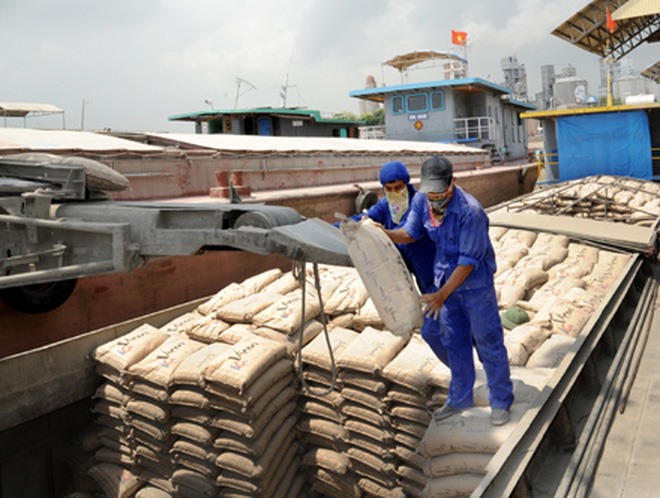 Economy
Economy

Việt Nam’s cement industry saw strong growth in cement exports in the first quarter of this year as many Chinese cement factories shut down due to pollution and power shortages.
 |
| Việt Nam’s cement industry saw strong growth in cement exports in the first quarter of this year. — Photo baoxaydung.com.vn |
HÀ NỘI — Việt Nam’s cement industry saw strong growth in cement exports in the first quarter of this year as many Chinese cement factories shut down due to pollution and power shortages.
Nguyễn Quang Cung, vice chairman of the Việt Nam Building Material Association, made the announcement at a press conference on Vietbuild, held in Đà Nẵng on April 17.
According to Cung, cement production in Việt Nam in the first quarter of 2018 increased by 18 per cent year-on-year, marking the first time it had reached high growth against an annual surge of some 10 per cent.
Meanwhile, the industry’s cement exports in the first quarter of 2018 rose 68 per cent over the same period last year.
The strong growth was due to the policy change of the Chinese government towards cement production, Cung said. China must close a series of cement plants from November 15, 2017, to March 15, 2018, because of environmental pollution and a shortage of electricity during the winter.
The environmental pollution is very serious in the area reserved for developing cement plants, near Beijing. In winter, Beijing saw massive amounts of cement dust rise from these plants due to strong winds.
In addition, China is facing a shortage of electricity during the winter when the nation needs more electricity for heating. Meanwhile, cement production is one of the industries consuming a large volume of energy, he said.
These circumstances turned China, the global clinker exporter in 2016, into an importer of cement at the end of 2017. It has mainly imported clinker from Việt Nam, at a volume of 1.5 million tonnes per month. Therefore, Việt Nam’s clinker exports skyrocketed in 2017.
The association expected to export 15 million tonnes of clinker in 2017, but in fact, Việt Nam exported up to 21 million tonnes last year. China is likely to extend the closure of its cement plants, not only in Beijing but also in many other cities. This means China’s cement and clinker production will drop further, Cung said.
This situation will affect the development of the cement industry in Việt Nam, he said. However, the construction materials industry in Việt Nam has to review its production to avoid facing a similar situation as China. — VNS